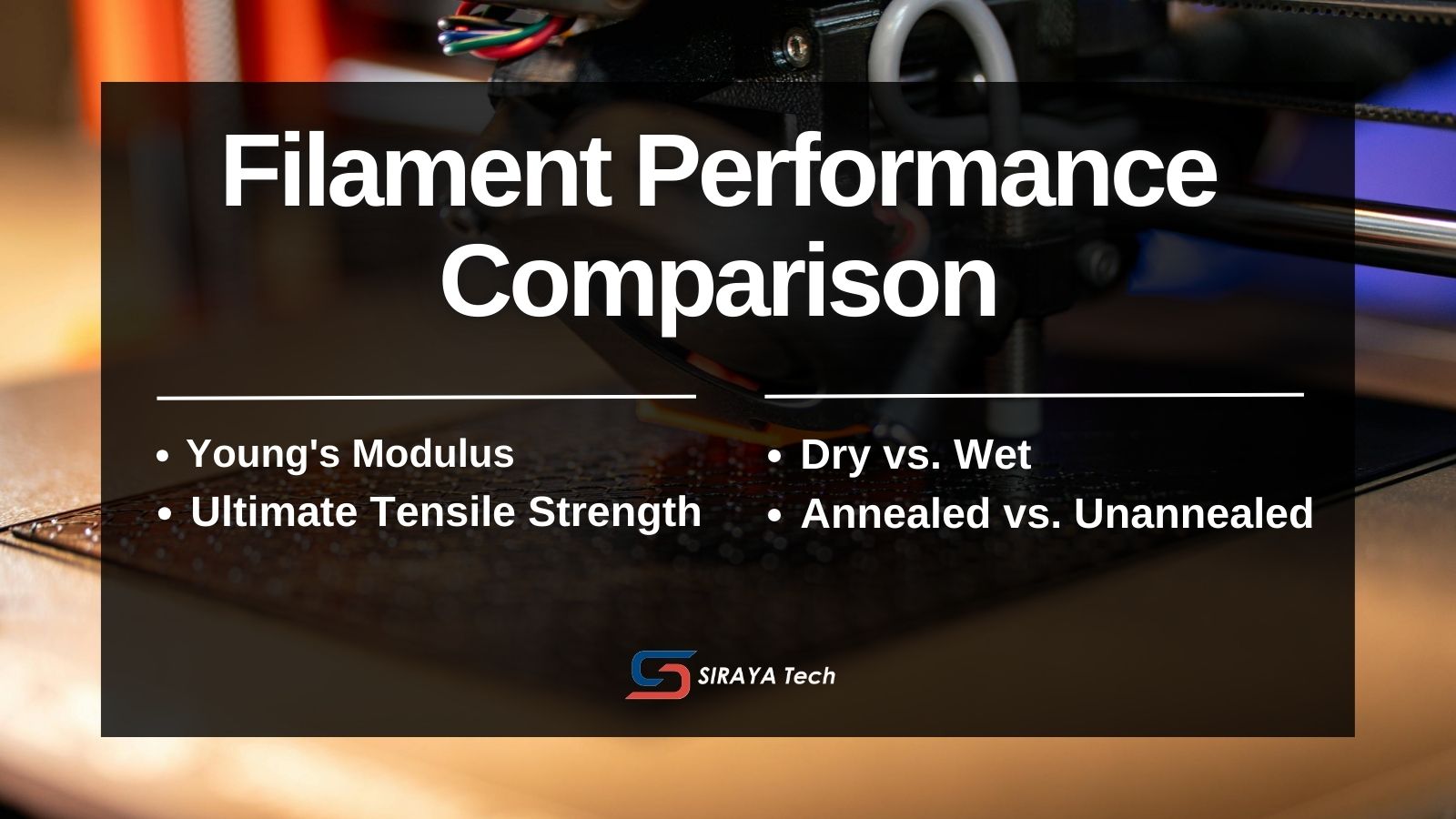3Dプリンティングは製造業に革命をもたらし、複雑なデザインや機能的なプロトタイプをかつてないほど容易に作成できるようになりました。しかし、作品が過酷な環境にさらされるとどうなるでしょうか?湿気、湿度、さらには直接の水への曝露は、多くの一般的な3Dプリント材料に大きなダメージを与え、強度と耐久性を損なう可能性があります。
そのため、真剣に取り組むメーカー、エンジニア、デザイナーにとって、湿潤状態での材料の性能を理解することは非常に重要です。
材料性能試験の比較
Nathan Tsoi の貴重なリソース、 「材料試験データの比較」を紹介します。
このウェブサイトでは、引張強度やヤング率といった重要な特性に焦点を当て、様々な3Dプリント材料を包括的に比較しています。このリソースの特徴は、乾燥状態と湿潤状態の両方における材料試験に重点を置いていることです。湿気にさらされる部品を設計する人にとって、これは画期的なツールとなるでしょう。(Nathan Tsoi氏のウェブサイトのスクリーンショット)

濡れていても常に輝きを保つ素材の一つが、Siraya Tech PET-CFです。この炭素繊維強化PETは、優れた強度、剛性、耐薬品性を兼ね備えています。
しかし、湿気の多い環境や水に濡れた環境では、どのように耐えられるのでしょうか?ネイサンのデータは具体的な答えを示しています。PET-CFを水に浸漬させた後の試験により、彼はPET-CFが優れた吸湿性を示し、アニール処理後に最も高いヤング率(MPa)を示し、構造的完全性を維持する能力があることを実証しました。
そのため、次のようなアプリケーションに最適です。
- 屋外用エンクロージャ:繊細な電子機器を環境から保護します。
- 海洋用途:ボート、カヤック、その他の船舶用の耐久性のある部品を作成します。
- 産業環境:過酷で湿度の高い環境に耐えられる堅牢なコンポーネントを設計します。
- 機能プロトタイプ:湿気による損傷を心配することなく、実際の状況で設計をテストします。
Nathan のウェブサイトでは、どの素材が優れた性能を発揮するかだけでなく、その効果の仕組みも示されています。詳細な方法論と明確なデータの提示により、お客様の具体的なニーズに基づいた情報に基づいた意思決定が可能になります。この厳格なアプローチこそが、このリソースの価値を高めているのです。
このウェブサイトでは、PET-CF以外にも幅広い種類のフィラメントを取り上げ、それぞれの長所と短所を包括的に概説しています。高強度、柔軟性、耐薬品性など、どのような特性を求める場合でも、用途に最適な素材を選ぶために必要なデータが見つかります。
したがって、湿気の多い環境で崩れたり、水がかかると強度が失われたりしてしまう 3D プリントにうんざりしているのであれば、Nathan Tsoi の素材比較 Web サイトにアクセスしてみてください。
こちらの素材比較ウェブサイトをご覧ください: https://material.nathantsoi.com/

